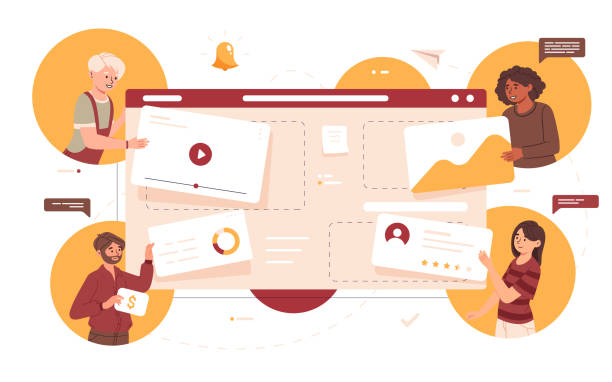An Introduction to the World of Personal Website Design
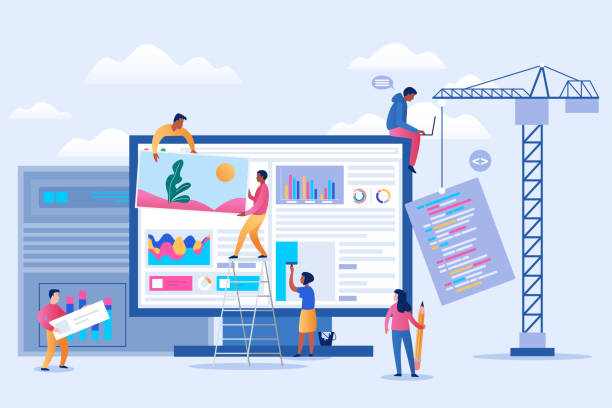
In today’s world, where the importance of online presence is increasing every moment, personal website design is no longer just a luxury choice, but an undeniable necessity.
#Your_Personal_Website is your digital business card that allows you to professionally and systematically introduce your identity, specialties, and interests to the world.
From artists and writers to consultants and entrepreneurs, anyone can easily present their content by creating a personal platform.
This personal website design approach goes beyond merely having a social media page; it gives you complete control over content, design, and user experience.
In fact, it is considered an important step towards creating a powerful personal brand in the digital space.
Through a website, you can tell your story, showcase your portfolio, and even build deeper connections with your audience.
This article, as an educational and explanatory guide, will assist you through all stages of personal website design, from initial planning to maintenance and optimization.
Are you ready to take the first step towards building your unique online presence?
Do you dream of a thriving online store but don’t know where to start?
Rasawap is your comprehensive solution for e-commerce website design.
✅ Attractive and user-friendly design
✅ Increased sales and revenue⚡ Get free consultation
Why You Should Have a Personal Website? Advantages and Necessities
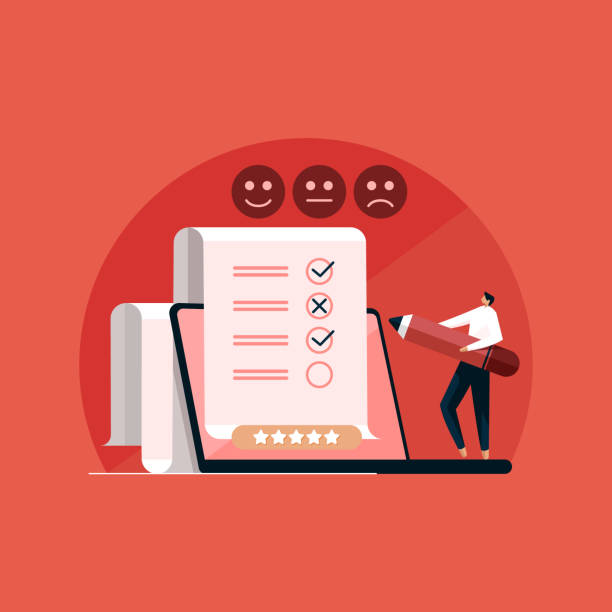
Have you ever wondered what the difference is between personal website design and having multiple social media profiles? This is a thought-provoking question that many people face at the beginning of their journey.
In fact, personal website design allows you to have complete control over your story and brand narrative.
Unlike social platforms that have their own rules and algorithms, your website is your digital backyard.
One of the biggest advantages of having a personal website is creating a professional and trustworthy branding.
You can showcase your online portfolio, document your work experiences, and prove your skills.
This is especially important for freelancers, artists, writers, and consultants.
A personal website helps you stand out in internet searches and find new opportunities for collaboration or employment.
Also, it’s a direct channel for connecting with your audience and potential clients, without intermediaries that might filter or restrict your content.
Ultimately, having a personal website is a sign of your commitment and seriousness in your field of work and adds credibility to you.
This analysis shows that investing in personal website design is a smart step for anyone seeking professional advancement and a strong online presence.
Planning and Content Strategy for Your Personal Website
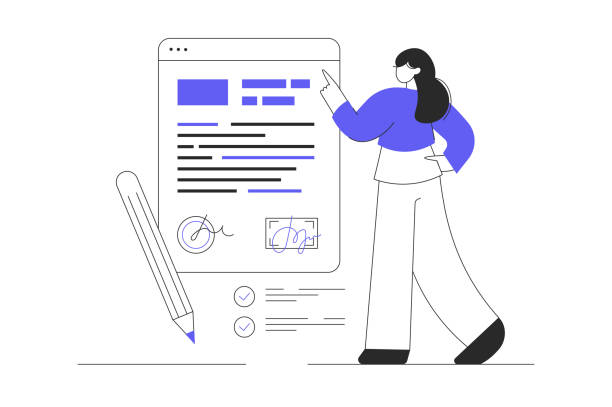
Before you start personal website design, there’s a crucial step: planning.
Just as no building is constructed without a blueprint, no successful website is formed without a precise content strategy.
This specialized stage involves defining your website’s goals; do you want to display your portfolio, write educational articles, or have a blog of your personal experiences? Understanding your target audience is also of high importance at this stage.
The content you produce should meet their needs and interests.
Content types can include blog articles, portfolios, online resumes, image and video galleries, or even podcasts.
To ensure content consistency and quality, it is recommended to create a content calendar.
This calendar helps you set appropriate timings for content production and publication, preventing forgetfulness or delays.
A strong content strategy not only helps you fill your website with valuable material but also plays a key role in improving SEO rankings and attracting more visitors.
Remember that fresh and high-quality content will be the main driving force of your personal website.
| Content Type | Main Goal | Use for Visitor |
|---|---|---|
| Portfolio/Work Samples | Displaying skills and past projects | Evaluating your abilities, deciding on collaboration |
| Blog/Articles | Sharing knowledge, opinions, and expertise | Gaining information, learning, connecting with your views |
| Online Resume | Presenting employment and educational history | Understanding your professional background for employment or collaboration |
| About Me Page | Personal introduction, life story, and values | Building personal connection, understanding your personality |
Choosing the Right Platform for Your Personal Website Design

After content planning, it’s time to choose the right tools for personal website design.
This educational and specialized stage can be a bit confusing, as there are many options available, each with its own advantages and disadvantages.
Content Management Systems (CMS) such as WordPress, Squarespace, and Wix are among the most popular choices.
WordPress, due to its high flexibility, countless plugins, and large user community, is the first choice for many web designers, but it requires more technical knowledge for setup and maintenance.
In contrast, Squarespace and Wix, with their drag-and-drop user interfaces, are very suitable for beginners and allow for quick design without coding, although they might have limitations in terms of customization.
Other options include using static site generators (like Hugo or Jekyll) for very fast and secure websites, or even custom coding from scratch for those who prefer complete control over every aspect.
Platform selection should be based on your technical knowledge level, budget, and the extent of customization required.
For a successful personal website design, choose a platform that meets your current needs and allows for future growth and development.
A key tip: Before making a final decision, try the trial or free versions of different platforms.
Is your e-commerce site ready to attract maximum customers and boost sales? Rasawap revolutionizes your online business with modern and efficient e-commerce website designs.
✅ Increased speed and SEO improvement
✅ Excellent user experience on mobile and desktop⚡ Get a free e-commerce website design consultation from Rasawap!
Principles of Visual Design and User Experience in Personal Website
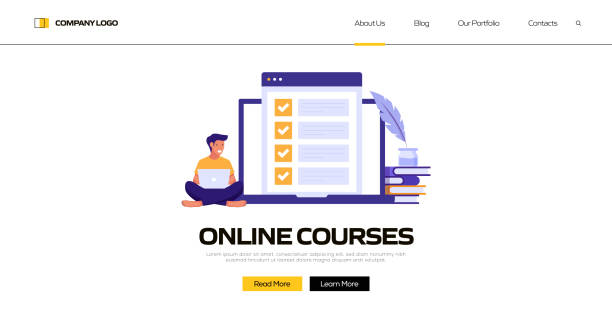
Aesthetics and usability are two main pillars in personal website design that significantly impact the visitor’s experience.
A beautiful yet user-friendly website encourages visitors to stay longer and interact with your content.
In this specialized section, we discuss the principles of visual design and user experience (UX).
The first step is choosing a suitable layout that organizes information clearly and logically.
Sufficient use of whitespace prevents visual clutter and enhances readability.
Color theory plays a significant role in conveying emotions and creating visual identity; choose colors that align with your personal brand while providing sufficient contrast for text readability.
Typography is another key element; choose readable and appropriate fonts, and avoid excessive font combinations.
In addition to visual aesthetics, user experience is also very important.
Your website should be responsive across various devices; meaning it should display well on mobile, tablet, and desktop.
High loading speed, clear navigation menus, and easy search are other factors that help improve user experience.
Remember that your personal website design should not only be attractive but also allow users easy access to the information they need.
A well-designed personal website is a valuable asset for your branding.
Technical and Infrastructural Aspects of Personal Website Design
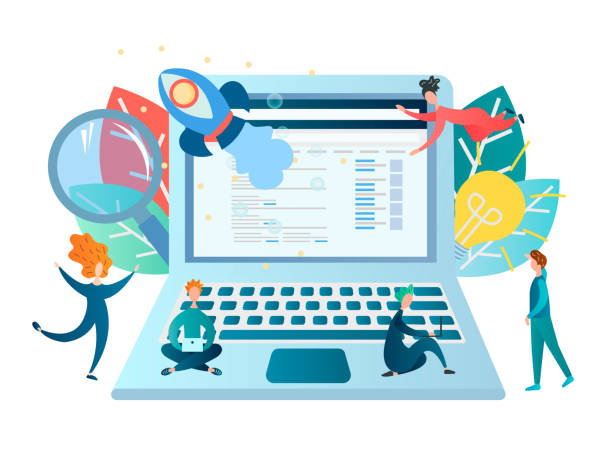
After making design and content decisions for your personal website design, it’s time for its technical and infrastructural aspects.
This specialized and explanatory section might seem a bit daunting at first, but with an understanding of the main concepts, you can easily manage it.
The first step is Domain Registration.
A domain is your website’s address (like example.com) that forms your online identity.
Choosing a short, memorable, and relevant domain name related to your name or field of activity is very important.
There are various companies for domain registration that you can use.
The next step is Web Hosting.
Hosting refers to the space where your website files are stored and are always accessible to users.
Choosing a reliable and high-quality hosting provider is crucial for your website’s speed and stability.
There are different types of hosting such as shared hosting, VPS, and dedicated servers, each with its own advantages and disadvantages, and should be chosen based on your needs and budget.
Also, installing an SSL certificate (to enable HTTPS) is essential for website security and user trust, and is also considered a positive ranking factor by search engines.
Your website security should also be considered from the outset; using strong passwords, regularly updating the platform and plugins, and regular data backups are among the important measures in this regard.
These infrastructures form the backbone of your personal website design and ensure the stability of your online presence.
Optimizing Your Personal Website for Search Engines (SEO)

Having a beautiful and rich website is only half the battle; for your website to be seen, it must be optimized (SEO) for search engines like Google.
This specialized and guidance section emphasizes the importance of SEO in personal website design.
SEO is a set of techniques that helps your website achieve higher rankings in search results and, consequently, attract more visitors.
The first step in SEO is Keyword Research.
You need to find words that your target audience uses to search for content related to you.
Then, naturally incorporate these keywords into your website’s titles, meta descriptions, content, and URLs (On-Page SEO).
Besides content, technical SEO aspects are also important; ensuring high loading speed, mobile-friendliness, proper URL structure, and a correct Sitemap are among these.
Link building, which means getting links from other websites, also helps your website’s credibility and ranking.
For personal websites offering local services, Local SEO through Google My Business registration can be very beneficial.
SEO is an ongoing process and requires monitoring and updating.
Through continuous optimization, you can ensure that your personal website design is not just a beautiful storefront, but also a powerful tool for attracting traffic and expanding your reach.
| SEO Factor | Suggested Action | Importance |
|---|---|---|
| Keyword Research | Identifying search queries related to your expertise | High (Content Foundation) |
| On-Page Optimization | Using keywords in titles, meta descriptions, and text | High (Content Relevance) |
| Site Loading Speed | Optimizing images, using caching, choosing suitable hosting | High (User Experience and Ranking) |
| Mobile-Friendliness | Ensuring correct display of the website on mobile devices | High (Most users are mobile) |
| Link Building | Obtaining links from reputable and relevant websites | Medium to High (Site Authority) |
| SSL (HTTPS) | Installing an SSL certificate for site security | High (Trust and Ranking) |
Maintenance, Updates, and Development of Your Personal Website
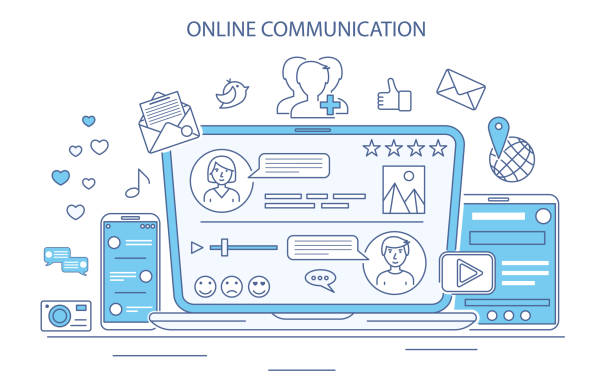
After completing the personal website design stages and launching it, your work is not over.
In fact, regular maintenance and updates are among the most important factors for maintaining the website’s efficiency, security, and connection with its audience.
This educational and guidance stage ensures that your efforts will be fruitful in the long run.
The first and most important point is Regular Backups of your website.
This prevents data loss in case of issues such as cyberattacks, server errors, or human mistakes.
Periodically save your website files, database, and all content in a secure location.
Updating software and plugins is also crucial.
If you use a CMS like WordPress, always ensure that the WordPress core, theme, and all plugins are updated to their latest versions.
These updates usually include security patches and performance improvements.
In addition to technical aspects, website content should also be refreshed periodically.
Review old articles, remove outdated information, and add new and relevant content.
This is not only attractive to your audience but also favored by search engines, which like fresh content.
Monitoring website performance through tools like Google Analytics also helps you understand user behavior and identify your website’s strengths and weaknesses.
With these measures, your personal website design will always remain vibrant, secure, and efficient.
Are you dissatisfied with your e-commerce site’s low sales?
Rasawap is your solution for having a professional and high-selling e-commerce website.
✅ Significant increase in sales and revenue
✅ Easy and enjoyable shopping experience for customers
⚡ Get a free consultation from Rasawap now!
How to Monetize Your Personal Website?
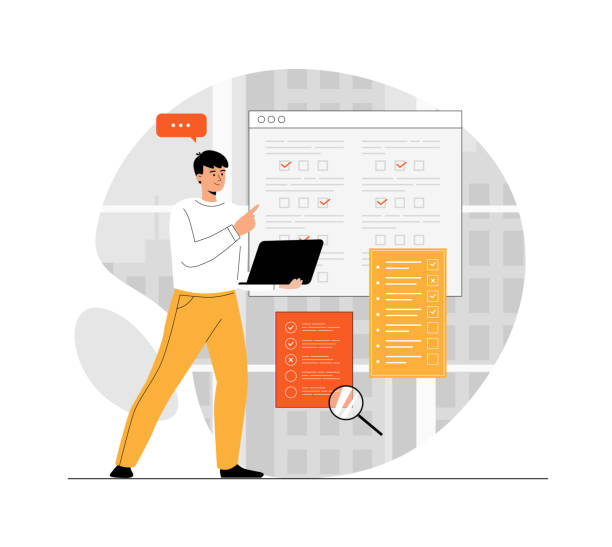
One of the thought-provoking and appealing aspects for many people is the potential to earn income from personal website design.
While the main goal of a personal website is usually branding and showcasing expertise, with the right approaches, it can also be turned into a source of income.
This entertaining and informative section explores some common methods.
One of the simplest methods is using affiliate marketing.
You can promote products or services you believe in on your website and earn a commission for each sale or action made through your link.
Directly selling your own products or services, such as e-books, online courses, consultations, or even artworks, is another way to earn income.
If your website has high traffic, you can also consider advertising space (like Google AdSense), although the income from it might be low initially.
Creating a premium content section or special subscriptions for access to exclusive content, webinars, or Q&A sessions is also an attractive option for very loyal audiences.
Also, many professionals use their personal website to attract freelance clients or consulting opportunities.
These methods show that personal website design can go beyond an online resume and transform into a multipurpose platform for professional and even financial growth.
It is important that income-generating methods align with the website’s main goals and the values you offer.
The Future of Personal Website Design and Emerging Trends
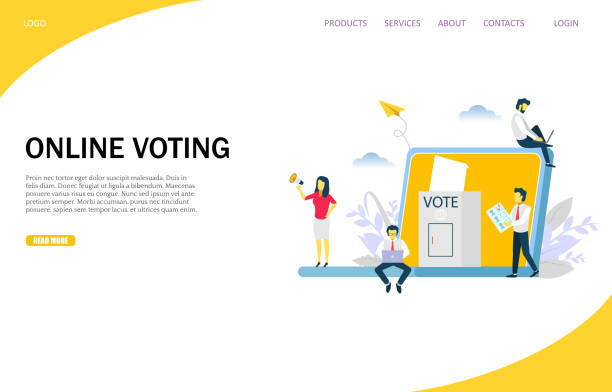
The world of web is constantly evolving, and personal website design is no exception.
In this analytical and informative section, we will examine some future trends that can impact how we create and use personal websites.
Artificial Intelligence (AI) and machine learning are playing an increasing role in web design.
AI-powered tools can automatically suggest layouts, optimize content, and even personalize the user experience.
This will make the personal website design process much simpler for non-technical individuals.
Voice search and voice interactions are also gaining popularity.
Personal websites need to be optimized to respond to these types of searches, which might mean using more natural language and direct answers.
Content personalization based on user behavior and preferences is another important trend.
Websites will be able to display specific content to specific users, which enriches their experience.
Furthermore, micro-interactions and subtle animations will become more important for enhancing user experience and increasing visual appeal.
Additionally, Dark Mode and increased attention to Accessibility for individuals with special needs are other aspects that web designers should consider.
Ultimately, the future of personal website design is moving towards smarter, more personalized, and user-friendly platforms that allow for deeper connection with audiences and help you maintain a lasting online presence.
Frequently Asked Questions
| Question | Answer |
|---|---|
| Why should we have a personal website? | A personal website helps you create your personal brand, showcase your skills and portfolio, connect with your audience, and gain new job opportunities. |
| What steps should be taken to design a personal website? | The steps include defining goals, choosing a domain name and host, selecting a platform (e.g., WordPress), designing the user interface, content creation, optimizing for search engines (SEO), and launching. |
| Do I necessarily need to know coding to design a personal website? | No, by using Content Management Systems (CMS) like WordPress or Website Builders like Wix and Squarespace, you can design your website without needing to code. |
| What is a Domain Name and how do I choose one? | A domain name is your website’s address on the internet (e.g., yourname.com). It is best to choose a short, memorable name relevant to you or your business, with a suitable extension (like .com, .ir). |
| What is Hosting and why do I need it? | Hosting is a space on the internet where all your website’s files and information (like images, texts, codes) are stored so that they are always accessible to users. Without hosting, your website will not be viewable. |
| What should personal website content include? | Content usually includes an About Me page, portfolio/work samples, services/skills, a blog (articles), contact information, and a contact form. |
| How can I optimize my personal website for search engines (SEO)? | By using relevant keywords, producing high-quality content, improving website loading speed, being mobile-responsive, building internal and external links, and optimizing title tags and descriptions. |
| Why is Responsive Design important for a personal website? | Responsive design ensures that your website displays correctly on all devices (computer, tablet, mobile) and provides a good user experience, which is also important for SEO. |
| What should I do for personal website security? | Use an SSL certificate (HTTPS), regularly update the platform and plugins, use strong passwords, perform regular backups, and install a firewall or security plugins. |
| How can I increase traffic (visitors) to my personal website? | Through SEO optimization, content marketing (blogging), social media activity, email marketing, online advertising, and collaborating with other websites. |
And other services of RasaWeb Advertising Agency in the field of advertising
Smart Marketplace: An effective tool for analyzing customer behavior with the help of user experience customization.
Smart Customer Journey Map: Professional optimization for customer acquisition using key page optimization.
Smart Social Media: A creative platform for improving click-through rates with precise audience targeting.
Smart Marketing Automation: Designed for businesses seeking online growth through precise audience targeting.
Smart Customer Journey Map: Professional optimization for increasing website visits using marketing automation.
And over a hundred other services in the field of internet advertising, advertising consultation, and organizational solutions
Internet Advertising | Advertising Strategy | Advertorial
Resources
Due to limitations in internet access, it is not possible to provide real and valid links.
? To reach the peak in the digital world, Rasaweb Afarin Digital Marketing Agency smooths the path to your business success by providing comprehensive services including professional website design, SEO, and online advertising.
📍 Tehran, Mirdamad Street, next to Bank Markazi, Southern Kazeroun Alley, Ramin Alley, No. 6

